You are currently browsing the category archive for the ‘MGM’ category.
Come Live With Me was the first of three films to star James Stewart in 1941. Along with Ziegfeld Girl and Pot O’ Gold these titles are little-viewed these days, perhaps only by Hollywood enthusiasts.
By looking at Come Live With Me I will outline a few ‘pleasures’ of watching classical Hollywood cinema.
Signs of the time
Much of the pleasure comes from aspects that are inherent in the film and outside of the filmmakers’ control. These would include aspects of form, such as the certain quality and texture of the black and white of 1940s film and the square framing within the 1.33:1 aspect ratio. Others aspects are embedded within the world of the film itself: the costumes, the behavior, the language, the performance styles, the voices, the locations, and the setting, all of which are of course infused with a sense of the period in which the film was made.
Titles
The title sequence is exciting enough. A logo, in this case a lion roaring within a celluloid ribbon frame, recalls other experiences at the movies – MGM’s The Wizard of Oz, The Mortal Storm, The Thin Man – and promises just as much. It’s both a promise of things to come and a stamp of proof that you’re at the movies.
Then the title sequence itself. In this case over comic illustrations of its stars; lighthearted, fun, throwaway, and indeed unusual for a movie of this period. Then in giant letters the headliners:
Here we have a typeface that appears indicative of the 1940s: sleek, smooth and modern. While absolutely standard at the time, such details can bring pleasure to a viewer who notice it as a sign of the period .
These names promise a lot. Again they recall your previous experiences with them and open a kind of contract that they will perform as they have before, fulfilling your expectation and desire to see them as you know them.
As the titles continue, scanning each one for recognisable names is a quick and silent game that moviegoers play.
Perhaps they recognise composer, supporting actors, or screenwriter (In this case the W.C. Fieldsian names of Patterson McNutt, based on a story by Virginia Van Upp). Of course the big one is director. Perhaps it’s going to be a Raoul Walsh, an Ernst Lubitsch or a Michael Curtiz movie – two of these not that likely in a lighthearted comedy as this. In this case the director is Clarence Brown, a director most famous for his silent classic Flesh and the Devil (1926).
Stars
The movie begins with a subplot about a socialite couple, Bart and Diana Kendrick. At the beginning of the evening they leave the house together like a refined husband and wife but when they get to the street they hop into separate taxis. Her boyfriend joins her for the ride while Bart heads to the hotel of his mistress, Johnny Jones, played by Hedy Lamarr, the star of the movie.
Nothing halts the flow of a Hollywood movie like the entrance of its female star. She is in the next room when Bart enters and sets down a gift on the table – a mechanical musical dancing ballerina. When Hedy Lamarr enters the camera pans from the dancing object, up her body and to a close-up of her face, which takes over the frame. She has been complexly lit, her hair backlit with a halo around its edges, her pupils, lips and earring glinting, and a strip of light that draws itself across her eyes. This kind of attention in the composition of the female star is very common in classical Hollywood cinema and creates a heavily stylised image. It serves to create an aura around the woman, a revery that works to construct the image of the female star as glamorous, ethereal, and ideal. Of course there is great pleasure to be had from the mere look of the star, partly a marveling at the combination of clothes, hair, make-up, body and face, as well as an idealised reflection of the human image. In this case the exoticness of the character is heightened by Hedy Lamarr’s trademark accent, adding a touch of European sophistication which serves to remove her from the commonplace even further.
The Set-Up
Many a Hollywood film has gone to lengths to justify its narrative concept through a precarious set-up, and often demands a generous suspension of disbelief. In this case Johnny knows that she is staying in America illegally but imagines that she can spend the rest of her life with Bart. During this very scene an immigration official (conveniently) appears – played by the prolific character actor Barton MacLane – and explains how she must leave the country immediately. In an aside with the immigration official Bart explains how if she were to return to her home country she would be ‘liquidated’ like her father. Although not explicitly stated, Bart is referring to the troubles of war-torn Europe and her homeland of Austria. The official actually takes pity on her, and because of the way she took the news of her deportation so bravely, he returns to the room to see her. Here the official gives his reason for admiring her and comes up with a solution to her problem:
Admittedly this is highly unlikely, but there is pleasure to be had from the silliness of this set-up. It is clearly only there so that the character can now attend to the comic business of being forced to marry a stranger. It is also quite rare that the character who appears to be the antagonist ends up offering a solution to the protagonist’s problem.
The Apartment Scene
James Stewart plays Bill Smith, a hard-nosed down-and-out penniless writer. We find him on a street bench about to pick up a cigarette butt off the pavement when Johnny steps on it accidentally. He’s annoyed but she continues on. Later that night they meet at a cafe while taking shelter from the rain. Accusing the waiter of stealing his money, they both end up kicked out and in a cab together. They soon discover that their names are ‘Smith’ and ‘Jones’ – ‘an evening of coincidences’ Bill calls it. The cab driver cynically thinks of them as pseudonyms as cover for a shady liaison. When she discovers that he lives alone and is truly penniless, she thinks her luck is in, that she’s discovered a candidate for her whirlwind marriage. He’s of course surprised when she invites herself over.
Back at his apartment here is what follows:
Here the pleasure comes from the concise dramatic set-up of each character understanding the situation differently. Bill thinks she’s over for a liaison but what she really wants is to propose. It is particularly engaging for the audience because they are let in on their contradictory motivations before the characters themselves have figured it out.
The scene is also a very funny one. His pennilessness is almost Chaplin-esque. Chaplin’s little tramp would often transform his poor surrounding into an illusion of luxury (a teapot would act as a baby’s bottle, a cigarette case of butts would become a grand selection of fine choices). Just before this scene Bill talks of his great library of books (which you only have to go down to the pawnshop to read). Here he talks of a nice open fire, pine logs, curling flames and a faithful dog. Offering Johnny a drink he suggests a ‘nice warm beer’ as though it were a fine wine. Declining, he instead confidently offers her a cigarette only to find the case empty.
Indeed this scene is styled like a comedy scene. Chaplin’s cinema often framed its characters squarely ahead and left them to their comedy business, making sure that their entire body was within the frame. Similarly the Marx Brothers were often left within a static frame and allowed to perform out their routines in full (see the card-playing scene in Animal Crackers). Here the scene is filmed front-on and in a single take, which allows the actors time to play out awkward pauses and also, in James Stewart’s case, to make use of the space around him.
Then comes the great line. Almost giving up, Bill says, ‘Well, I guess that takes care of the formalities’, sits on her arm rest and plants a kiss on her face. In return he gets a slap. When she asks him, ‘What do you mean by doing a thing like that?’, Stewart’s expression comically encapsulates confusion and irritation.
He soon gets the chance to perform a big comic double-take when he asks her:
Bill: Well what did you come up here for anyway?
Johnny: I came here to ask you to marry me.
Stewart’s performances were often laced with comedy, but he was subtle about being funny and controlled it well. Here his comedy isn’t obvious – he keeps a stern demeanor throughout the scene – but he busies himself with comedy business, moving around the room in a single take.
In Bed Apart
Needless to say Bill eventually accepts the proposal and soon enough they both find that they are actually falling in love with each other, even though Johnny won’t fully admit it to herself. Even so Johnny rejects Bart’s proposal and Bill’s writing sessions become obsessed with her. Bill soon decides to take Johnny on a honeymoon, even though she is still not entirely sure is she loves Bill.
They eventually end up at his grandma’s place. Like many grandmothers in Hollywood movies she is impossibly wise (see An Affair to Remember (1957), for instance), so much so that she makes decorative plaques brandishing proverbs such as, ‘What Fools These Mortals Be’ and ‘Time Heals All Wounds’. This philosophizing rubs off on Johnny and she soon comes to fully appreciate Bill.
At the climax of the film Bill makes excuses to visit Johnny’s room, giving her a flash light in case she has to signal for his assistance. They soon find each other in separate beds, but it turns out that the wall between them does not fully reach the ceiling. As we see here this leads to the possibility of an interesting composition and dramatic set-up. But first in the scene comes an exquisite little moment:
Bill has been trying for so long to win her affections and when he has almost given up he lights a cigarette which illuminates the proverb on the wall. What is sublime about that moment is that he does not look at it. Many films would have had its character look right at it, acknowledge it, and continue on with renewed confidence. In this case it is subtle, funny and poignant.
Lying in bed their emotional separation is neatly represented by the wall between them. It also serves to make the poetry reading more poignant by the fact that they cannot see each other, that Bill cannot see the moving effect it is having on Johnny.
Popular cinema can be very perceptive of human traits and life situations. Its talent is in representing these common situations in a stripped down, concise form that is both far neater than tangled real-life situations, but also far more stylised. This moment here is a romantic one that appeals to the common experiences and desires of its audience, and here part of the pleasure comes from the distillation of a complex situation into a clearly defined dramatic concept: he is in love with her and she is falling in love with him.
The Climax
Briefly complicating the drama before its conclusion is the arrival of her married boyfriend Bart who comes to profess his love to Johnny. This angers Bill who leaves them together. Back alone in his room he sees the car leave the driveway and believes that Johnny has left him for Bart. The following scene then plays out:
Within here is the moment of Bill’s revelation that she has not left him, neatly conveyed by the flashing of the torch he gave her in case she needed him in the night. The incomplete wall then becomes an object that can be penetrated; Johnny appears in the space, again exquisitely framed, and Bill steps up for their first passionate kiss. Strangely, they now look into the camera as though the viewer were an intruder on their situation. Do they remain Bill and Johnny at this point or do they become James Stewart and Hedy Lamarr?
Why this happens at this stage I do not know, but it’s almost as if the viewer becomes accepted into the film in the most extreme way possible, by actually affecting, and interacting with, the characters. It is also pleasurable in its surrealism, a comic moment that seems to have little justification.
So here is a movie almost plucked at random from 1941. It was difficult enough to get hold of and indeed my copy is a bootleg. The film is certainly not revered as a classic but even as an example of standard Hollywood output it contains many of the factors that makes classical Hollywood cinema pleasurable more widely.
Christian Hayes.
Jean Renoir arrived in America for the first time on New Year’s Eve 1940 on an American liner sailing from Lisbon to New York. He swiftly left the Big Apple for Sunset Boulevard and by the middle of January had been signed to a contract with 20th Century-Fox. It wasn’t until the end of May however, after having had a series of ideas for stories rejected, that Renoir was able to begin on his first American film Swamp Water, scripted by Dudley Nichols and based on a novel by Vereen Bell.
Despite having been relatively forgotten even in relation to Renoir’s American oeuvre Swamp Water, while at times frustrating, is ultimately impressive. It tells of the vast Okeefenokee swampland of Georgia and focuses on young Ben Ragan’s (Dana Andrews) encounter with Tom Keefer (Walter Brennan) an accused murderer who has been hiding out in the swamp for years. Particularly strong is the film’s use of depth photography in its location shooting of Okeefenokee as well as in some key dramatic scenes.
Likewise of interest is the film’s attempt to get at the accent of the American South, which, while possibly not in itself immensely researched, nonetheless feels accurate, with performances aided by the script’s strong sense of linguistic authenticity. The script also contains some sharp comic moments, a good example being Ben Ragan and Keefer’s daughter Julie’s (Anne Baxter) first romantic encounter, in which Ben tells Julie that “You’re a heap prettier than Mabel is, if you was a little bigger” to which Julie responds, “I could grow more maybe!”
In this piece I will focus, however, on the film’s central story, which on the surface might appear fairly melodramatic and apolitical and has indeed generally been received this way. Although Swamp Water was assigned to Renoir, rather than chosen by him, it nevertheless was of interest to the director who commented that, “it is still something to be able to direct a film with a story that is not completely idiotic.” Screenwriter Dudley Nichols was an established figure and had worked throughout his career with such directors as John Ford, Howard Hawks and Fritz Lang. Renoir and Nichols got along very well, no doubt not in small part due to the fact that Nichols’ previous experience with these directors must have left him very open to possible revisions of his work. I will argue here that while on the surface Swamp Water appears to be an escapist drama, it has a political subtext that touches at once on issues both of the American South and of the Europe that Renoir had recently escaped.
A key example of a theme in Nichols’ script that appears to have been worked on by Renoir is that of humans as being not dissimilar to animals. For example, Ben like his dog is an adventurer who gets easily lost, while Julie like her kittens is small but bites when threatened.
There is nothing in the film’s narrative or script, however, that could be seen to have prompted the decision to have Tom Keefer horizontally creep up on Ben the first time we see him, paralleling him with the alligators that haunt the swamplands; this seems likely to be Renoir’s image.
And the choice that Julie remain silent for a long-time into the film (which incidentally is perfect for Baxter’s acting, which is of a high-emotional tenor) and have wild hair and a wide-eyed performance, all seem to extend her appearance as a cat beyond those expressed on the page.
These images of Ben and Julie are undoubtedly fairly romantic and arguably mildly condescending towards the real people of small-towns in America. Indeed Renoir was close friends with Robert Flaherty, who arranged for Renoir’s journey to America; and Flaherty had made the famously condescending ethnographic documentary of the Inuits, Nanook of the North (1922.) And Renoir said of Georgia that it was “an old country, very primitive, with peasants who remind me of the inhabitants of very isolated corners of Brittany” and that “the families have no idea of quitting their wooden farmhouses. The tree which shades the porch has been planted by some ancestor.” (1)
On closer inspection, however, this theme is a little more complex than it first appears, since beneath the surface of this more romantic animal imagery there is also the image of the hunt. The brutality of rabbit hunting had been central to Renoir’s previous film La Regle du Jeu (1939), a symbol of human brutality: as a man is killed we are shown a close up of a rabbit being shot. In both films the hunt is presented as a social convention upholding bourgeois society’s cruel and arbitrary rules. In Swamp Water the culmination of Ben’s ostracism from his community is represented in his no longer being allowed to hunt foxes alongside his neighbours. But the villagers’ hunt can also be paralleled to their blood-thirsty desire to catch Tom Keefer and have him hanged.
In this respect Swamp Water can be considered a film about the lynch-mob mentality, following on from Fritz Lang’s fairly recent film for MGM on the subject, equally with an all-white cast, Fury (1936.) Seen this way Swamp Water’s opening image of a skull sitting on the top of a cross in the centre of the river which is a marker to help guide people through the river, can also be considered as suggesting that the film can be read as a Christian allegory of Jesus’ unjust crucifixion.
Considering the setting of Georgia it is strange that this film has no black characters (and very few black extras.) It is possibly the case that, just as with Lang’s film, it was thought that too overt reference to race could be dangerous. (2)
Despite this, however, Tom’s daughter Julie, while literally white, could certainly pass symbolically as black. Indeed her reputation in the village has been blackened by her father’s name and she is treated as inferior, forced to take on the role of live-in maid, one that in Hollywood cinema is traditionally taken by a black character. Equally when Ben takes her to a ball the community are surprised and while she receives some compliments the family for which she works disapprove, which is certainly suggestive of the racial issue of segregation.
A final image that suggests the racial allegory in the film is the quite blatant fact that despite Ben’s dog having the name Trouble he actually does not get Ben directly into trouble. This red herring is similar to the paralleling of Tom with the alligator, whose viciousness turns out not to be in Tom’s nature. In each case there is an overturning of our perceptions of a dangerous “other.” Key here, however, is the fact that these quite central and obvious negations of the danger of “otherness” do not seem to have any direct reference to racism against black people, but are far broader. Clearly this more general space for considering the unfair victimization of some form of “other” makes the film, like Lang’s Fury, equally open to being read as an allegory about the victimization of Jews under the Nazis throughout Europe.
While Swamp Water contains various hints that it is intended as in part racial allegory, most viewers today will probably not notice this and indeed neither would have many at the time of the film’s release. The initial script of Swamp Water was greatly cut by the time the film came together: a memo from Darryl F. Zanuck to Renoir pressing him to hurry the production along notes that the script, “has been cut to 137 pages. Over 45 pages have been removed”. (3) Equally, a key scene that Renoir shot was cut and Zanuck constructed another scene to replace the gap that had now been made in the plot. (4) It seems likely that a closer look at all the elements that didn’t make it into the film’s final cut, if available, along with the various discussions amongst the filmmakers involved in Swamp Water’s production might well yield further political aspects of the film. Nevertheless I would say that something of a political perspective remains in this film, if only in its overt argument against the victimization of an “other” that may well have been recognized by some viewers at the time, if on an unconscious rather than conscious level, as a reflection on the dangers of fascism.
Ben Dooley.
(1) Sesonske, Alexander, ‘Discovering America: Jean Renoir 1941’, Sight and Sound, Autumn 1981, pp. 256-261.
(2) Eisner, Lotte H., Fritz Lang, Da Capo, 1988, p. 164.
(3) Vitanza, Elizabeth, ‘Another Grand Illusion: Jean Renoir’s First Year in America’, The Film Journal, http://www.thefilmjournal.com/issue12/renoir.html
(4) Sesonske.

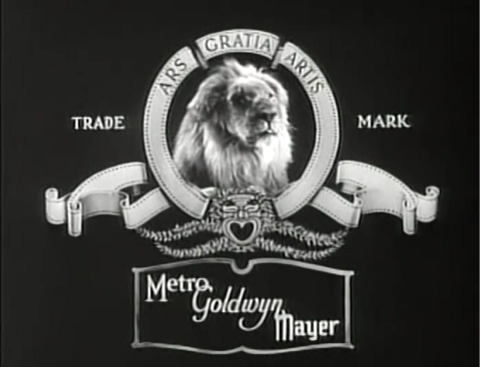

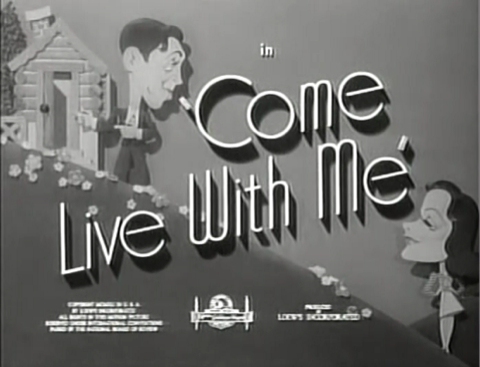
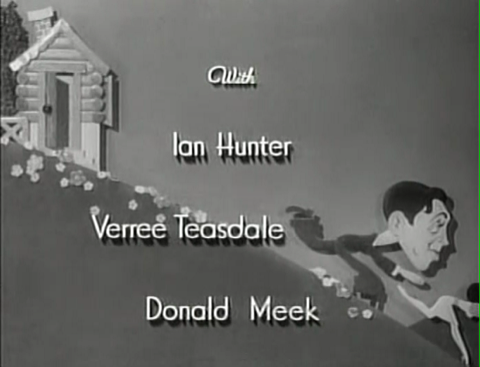






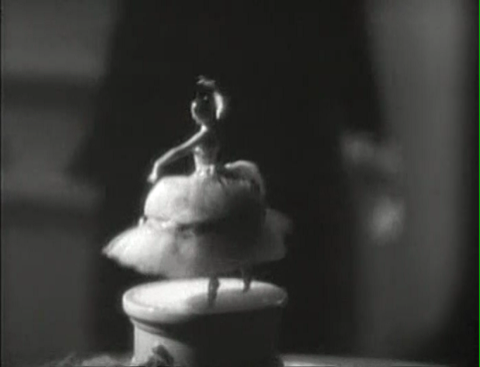




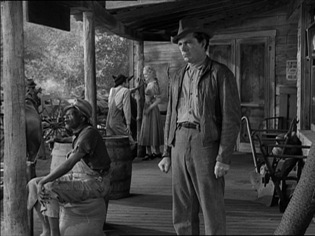





Recent Comments